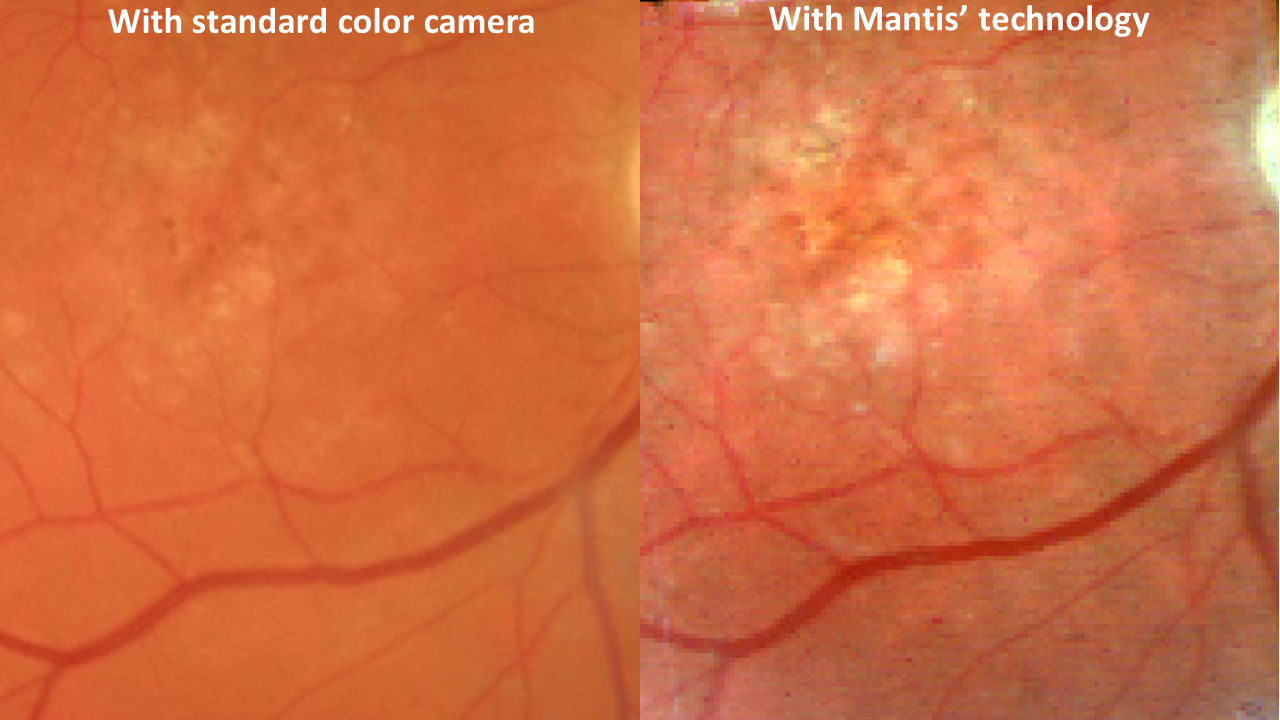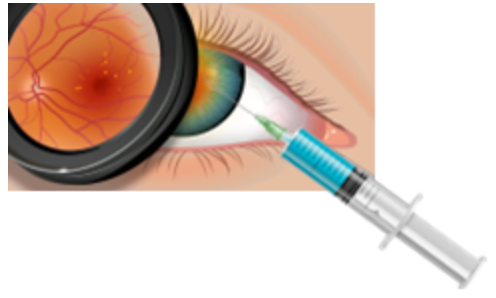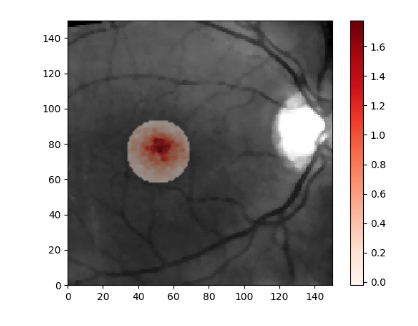Breaking news: CLINICAL TRIAL VALIDATES CUTTING-EDGE ANALYSIS FOR AMD!

Age-related Macular degeneration (AMD) is the leading cause of blindness in the western world with 200 million people affected and causing 4 million cases of Blindness. Treatments exist but are very expensive and painful as they require injections in the eye.

In an article recently submitted (find preprint here), we show that Mantis’ technology brings clear clinical benefits in the diagnostic and prevention of Age-related Macular degeneration, the leading cause of blindness in the western world. Indeed, our preliminary results show that we can bring added value to the standard diagnostic in two complementary ways:
-
- Improved imaging
By combining 3 spectral slices (out of 36) from our hyperspectral image we can generate color images that enhance the contrast of drusen and tissue degeneration characteristic in AMD. In the image below, on the left is the image of an AMD retina taken by a standard fundus color camera and on the right a reconstructed color image taken with Mantis’ hyperspectral camera.
- Improved imaging

-
- Measurement of risk factor MPOD
By measuring the absorption of the light at different wavelengths we can calculate the quantity of Macular pigment, a component located at the center of the macula that protects it from harmful radiations and oxydative damages. A lack of such macular pigment is a risk factor for AMD.
- Measurement of risk factor MPOD

These results are important for Mantis Photonics as they prove its commercial value. Indeed, there are devices commercially available for both applications:
- Scanning laser imaging modules are being used to create high contrast images of the retina for diagnosing the AMD or diabetic retinopathy.
- Heterochromatic flicker photometry are being used to measure the macular pigment and provide an MPOD score to the physicians who can then guide the patients and prescribe food supplements.
We can bring these two devices in one, and our plan is to add more value by providing the ability to classify the type of AMD (wet or dry) based on the spectrum which would allow doctors to give the best treatment to their patients.